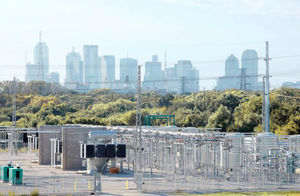
- Products
- Compensation system
- Hitachi Energy
Compensation system


Add to favorites
Compare this product
Description
Fixed series compensation – getting the most out of long AC transmission lines
Series compensation is a well established technology that is primarily used to reduce transfer reactances, most notably in bulk transmission corridors. The result is a significant increase in power transfer capacity and improvement of voltage and angular stability in transmission systems.
Fixed series compensation has long been the preferred solution for optimizing performance in very large bulk transmission corridors.
In a transmission system, the maximum active power transferable over a certain power line is inversely proportional to the series reactance of the line. Thus, by compensating the series reactance to a certain degree, using a series capacitor, an electrically shorter line is realized and higher active power transfer is achieved.
Installing a capacitive reactance in series in a long (typically more than 200 km) transmission line reduces both the angular deviation and the voltage drop, which increases the loadability and stability of the line. Since the current through the transmission line directly "drives" the MVAr output from the capacitor, the compensation concept is "self-regulating”, and this straightforward principle ensures that series compensation is an extremely cost effective solution.
Series compensation also improves the voltage profile along the power corridor and optimizes power sharing between parallel circuits.
Series compensation technology
Because series capacitors are installed in series on a transmission line, the equipment must be elevated on a platform at system voltage, fully insulated from ground .
Catalogs
No catalogs are available for this product.
See all of Hitachi Energy‘s catalogsOther Hitachi Energy products
Flexible AC Transmission Systems (FACTS)
*Prices are pre-tax. They exclude delivery charges and customs duties and do not include additional charges for installation or activation options. Prices are indicative only and may vary by country, with changes to the cost of raw materials and exchange rates.




